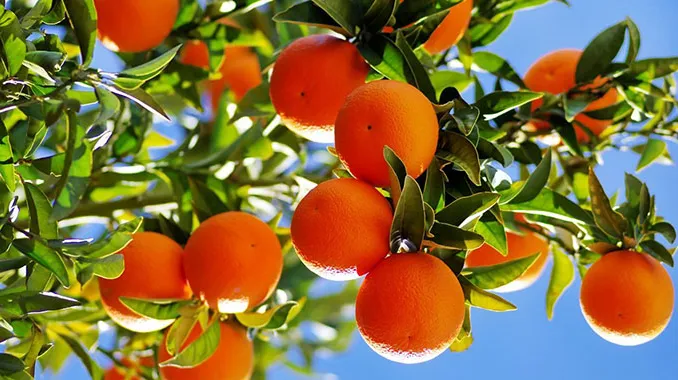Optimizing Yield: Effective Pruning Techniques for Citrus Farmers in Nigeria with Wigmore Trading
Optimizing Yield: Effective Pruning Techniques for Citrus Farmers in Nigeria with Wigmore Trading
Are you a citrus farmer in Nigeria looking to maximize your yield and boost your profits? Look no further! In this blog post, we will delve into the world of effective pruning techniques for citrus farmers, brought to you by Wigmore Trading. With their expert advice and top-notch products, you’ll discover how proper pruning can revolutionize your farming practices and ensure an abundant harvest. Get ready to optimize your yield like never before!
Introduction to Citrus Farming in Nigeria with Wigmore Trading
Introduction to Citrus Farming in Nigeria with Wigmore Trading
Nigeria is one of the leading producers of citrus fruits in Africa, with a total production of over 4 million tons annually. This thriving industry contributes significantly to the country’s economy and provides employment opportunities for thousands of farmers. One of the key players in this industry is Wigmore Trading, a leading supplier of agricultural equipment and tools.
Wigmore Trading has been at the forefront of promoting sustainable agriculture practices in Nigeria, particularly when it comes to citrus farming. They have been working closely with local farmers, providing them with high-quality machinery and tools that help improve their yield and overall productivity.
In this section, we will introduce you to citrus farming in Nigeria and how Wigmore Trading is supporting citrus farmers through effective pruning techniques.
Types of Citrus Fruits Grown in Nigeria
Citrus fruits are grown extensively across different regions in Nigeria due to their adaptability to various soil types and climates. The most commonly grown varieties include oranges, tangerines, lemons, limes, grapefruits, and mandarins. These fruits not only provide essential nutrients but also have a high demand both locally and internationally.
Benefits of Citrus Farming
Citrus farming offers numerous benefits for both small-scale and large-scale farmers. Firstly, it requires minimal capital investment compared to other crops such as maize or wheat. Secondly, fruit trees can produce yields for more than 20 years if properly maintained. Additionally, these crops have a
Importance of Pruning for Optimal Yield
Pruning is an essential cultural practice in citrus cultivation that involves the removal of specific plant parts such as branches, shoots, and leaves to promote optimal growth and increase yield. It is a vital technique that every citrus farmer should adopt to ensure healthy and productive trees. In this section, we will discuss the importance of pruning for optimal yield in citrus farming.
1. Encourages Regeneration and Growth
One of the primary reasons for pruning citrus trees is to stimulate new growth. By removing dead, damaged, or diseased branches, you allow the tree to focus its energy on producing new shoots and leaves. This results in a healthier tree with increased vigor and vitality. Additionally, by thinning out dense branches, you create more space for sunlight penetration and air circulation, which are crucial for photosynthesis and pest management.
2. Improves Fruit Quality
Proper pruning techniques can significantly impact the quality of fruits yielded from a citrus tree. When you prune off excess branches or suckers (small shoots growing at the base of the tree), you direct all nutrients towards developing larger and juicier fruits rather than spreading them across multiple small ones. Moreover, by removing malformed or damaged fruits during pruning, you prevent them from competing for resources with healthy ones.
Types of Pruning Techniques for Citrus Trees
There are several types of pruning techniques that citrus farmers in Nigeria can utilize to optimize their yield and ensure healthy growth of their trees. Each technique serves a specific purpose and should be performed at the appropriate time to achieve the best results. In this section, we will discuss some of the most commonly used pruning techniques for citrus trees.
1) Thinning: This technique involves removing excess branches and leaves from the tree, allowing more sunlight and air circulation to reach the remaining branches. Thinning helps in reducing overcrowding, promoting better fruit development, and preventing diseases by improving airflow within the tree canopy.
2) Topping: As the name suggests, topping is the process of cutting off the top portion of a tree. This technique is commonly used on young citrus trees to encourage lateral branching and create a fuller canopy. It also helps in maintaining an ideal height for easy harvesting.
3) Heading back: This technique is similar to topping but involves cutting off only a portion of a branch rather than its entire length. It helps in stimulating new growth on older branches and rejuvenating overgrown or damaged trees.
4) Rejuvenation pruning: This is an extensive form of pruning that involves removing large sections of old wood from mature trees to promote new growth. It is typically done every few years to maintain the health and productivity of older citrus trees.
Step-by-Step Guide to Properly Prune Citrus Trees
Pruning is an essential practice for citrus farmers to optimize yield and promote healthy growth in their trees. It involves the selective removal of parts of the tree, such as branches and leaves, to improve its structure and overall health. Proper pruning also helps control the size of the tree, allowing for easier management and harvesting.
In this step-by-step guide, we will walk you through the process of properly pruning your citrus trees to ensure maximum productivity. Remember that timing is crucial when it comes to pruning citrus trees – it should be done during the dormant season, preferably in late winter or early spring before new growth begins.
Step 1: Gather Your Tools
Before starting any pruning work, gather all necessary tools to avoid interruptions. Some basic tools you will need include hand pruners, loppers, a pruning saw or pole pruner for higher branches, and protective gear like gloves and safety glasses.
Step 2: Identify Dead or Diseased Branches
The first step in proper pruning is identifying dead or diseased branches. These branches can drain valuable nutrients from the rest of the tree and act as entry points for pests and diseases. Use your hand pruners or loppers to remove these branches close to where they join a healthy stem.
Step 3: Remove Suckers
Suckers are small shoots that grow from the base of a tree or along its trunk. They often emerge from below ground level and can compete with the main tree for nutrients, resulting in decreased productivity.
Tools and Equipment Needed for Pruning
Pruning is an essential practice for citrus farmers in Nigeria to optimize their yield and promote healthy growth of their trees. To achieve successful pruning, it is important to have the right tools and equipment. In this section, we will discuss the various tools and equipment needed for effective pruning.
1. Pruning Shears: A good pair of pruning shears is a must-have tool for any citrus farmer. These small handheld scissors are designed specifically for cutting branches and stems up to ¾ inches in diameter. They come in various sizes and designs, but it is recommended to choose one with sharp blades made of high-quality steel.
2. Loppers: These are similar to pruning shears but are larger in size and can cut branches up to 2 inches in diameter. Loppers provide more leverage which makes them suitable for thicker branches or hard-to-reach areas.
3. Hand Saw: For larger branches that cannot be pruned with loppers, a hand saw can be used. There are different types of hand saws available, such as curved-blade saws or straight-blade saws. It is advisable to choose a saw with razor-sharp teeth and comfortable grip handles.
4. Pole Pruner: This long-handled pruner comes with a curved blade attached at the end of a pole, usually ranging from 6-12 feet long. It allows you to reach higher branches without using a ladder, making it safer and more convenient for tree pruning.
Common Mistakes to Avoid when Pruning Citrus Trees
Pruning is an essential practice for citrus farmers in Nigeria to optimize yield and maintain the health of their trees. However, there are some common mistakes that can be made when pruning citrus trees that can have negative impacts on their growth and productivity. In this section, we will discuss the most common mistakes to avoid when pruning citrus trees.
1. Pruning at the wrong time: Timing is crucial when it comes to pruning citrus trees. Pruning should ideally be done during the dormant season when the tree is not actively growing. In Nigeria, this would be from December to February. Pruning at other times can cause stress to the tree and reduce its overall yield.
2. Over-pruning: While it may seem like a good idea to remove as many branches as possible, over-pruning can actually harm the tree’s ability to produce fruit. This is because too much pruning reduces the tree’s leaf surface area, which is responsible for photosynthesis and nutrient production.
3. Using dull or dirty tools: It is important to use sharp and clean pruning tools when working on your citrus trees. Dull or dirty tools can cause damage and introduce diseases to your trees, hindering their growth and productivity.
4. Removing too much foliage: Foliage plays a critical role in providing energy for fruit production through photosynthesis. Removing too much foliage can weaken the tree and reduce its ability to produce fruits.
Benefits of Working with Wigmore Trading for Citrus Farming Needs
Wigmore Trading is a leading provider of agricultural solutions and equipment in Nigeria, with a strong focus on the citrus farming industry. With years of experience and expertise in the field, Wigmore Trading has become a trusted partner for many citrus farmers across the country. In this section, we will discuss the various benefits that come with working with Wigmore Trading for all your citrus farming needs.
1) Quality Products:
One of the biggest advantages of working with Wigmore Trading is their commitment to providing high-quality products. They offer a wide range of top-of-the-line tools, machinery, and supplies specifically designed for citrus farming. From pruning shears to harvesting equipment, every product goes through stringent quality checks to ensure that it meets international standards. This not only ensures efficiency but also leads to better yields for farmers.
2) Expertise and Knowledge:
Wigmore Trading has a team of experienced professionals who have an in-depth understanding of the challenges faced by citrus farmers in Nigeria. Their knowledge allows them to provide tailored solutions that are specific to each farmer’s unique needs. Whether you are just starting or have been in the industry for years, their experts can guide you on how to optimize your pruning techniques for maximum yield.
Conclusion: How Effective Pruning Can Boost Your Citrus
Conclusion: How Effective Pruning Can Boost Your Citrus
Pruning is a crucial aspect of citrus farming that cannot be overlooked. As we have discussed in this article, proper pruning techniques can significantly improve the yield and overall health of your citrus trees. In this conclusion section, we will summarize the key points and benefits of effective pruning for citrus farmers in Nigeria.
1. Promotes Growth and Development:
One of the main reasons why pruning is important is because it promotes growth and development in citrus trees. By removing dead or diseased branches, you allow more nutrients to flow to healthy branches, encouraging new growth and improving tree vigor. This results in larger fruits, better quality, and higher yields.
2. Increases Sunlight Exposure:
Effective pruning also helps to increase sunlight exposure to all parts of the tree. Adequate sunlight is essential for photosynthesis – the process by which plants convert light energy into chemical energy – which is necessary for plant growth and fruit production. Properly pruned trees allow sunlight to reach all parts of the tree evenly, resulting in healthier trees and better fruit production.
3. Controls Pests and Diseases:
Proper pruning practices can help control pests and diseases that may affect your citrus trees. Dead or damaged branches are breeding grounds for insects and disease-causing pathogens. By removing these branches through regular pruning, you prevent infestations from spreading throughout your orchard.








Comments are closed.